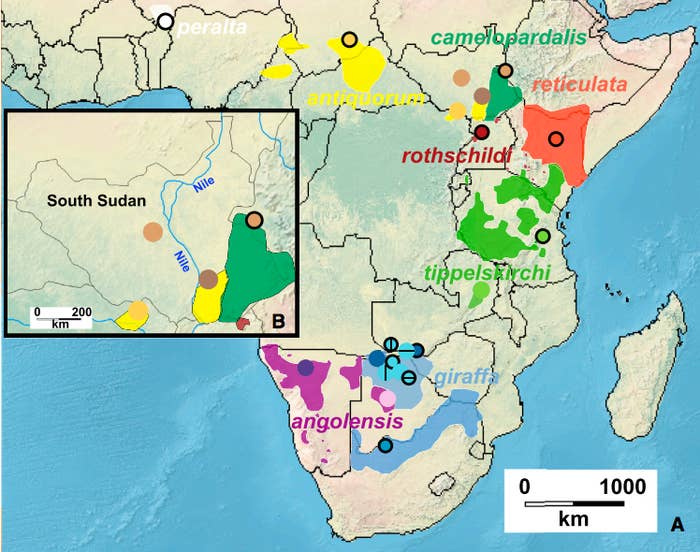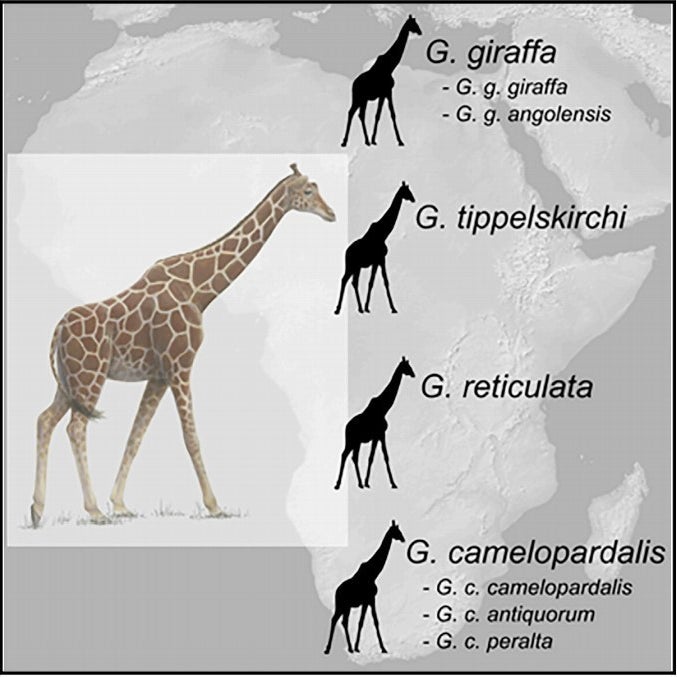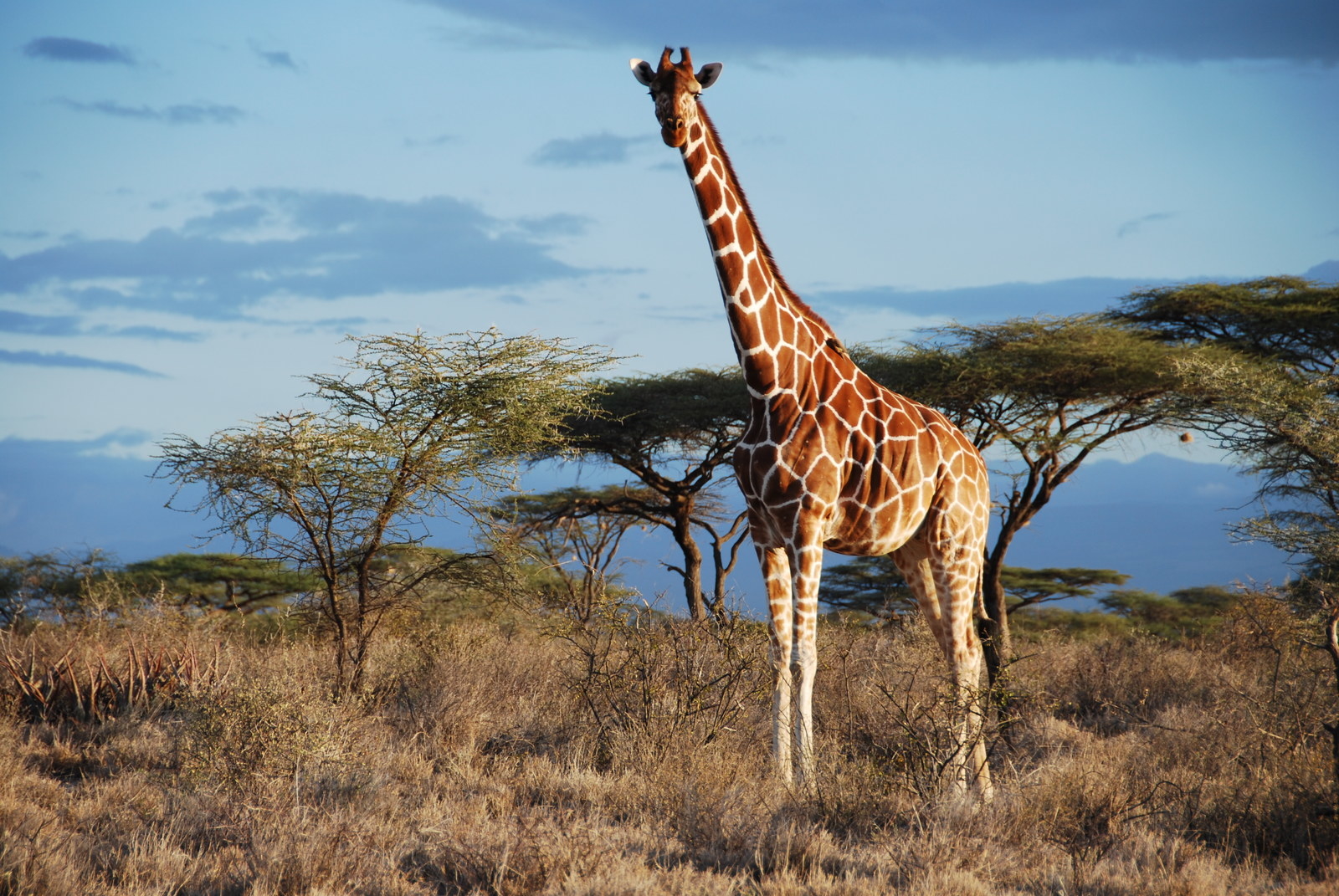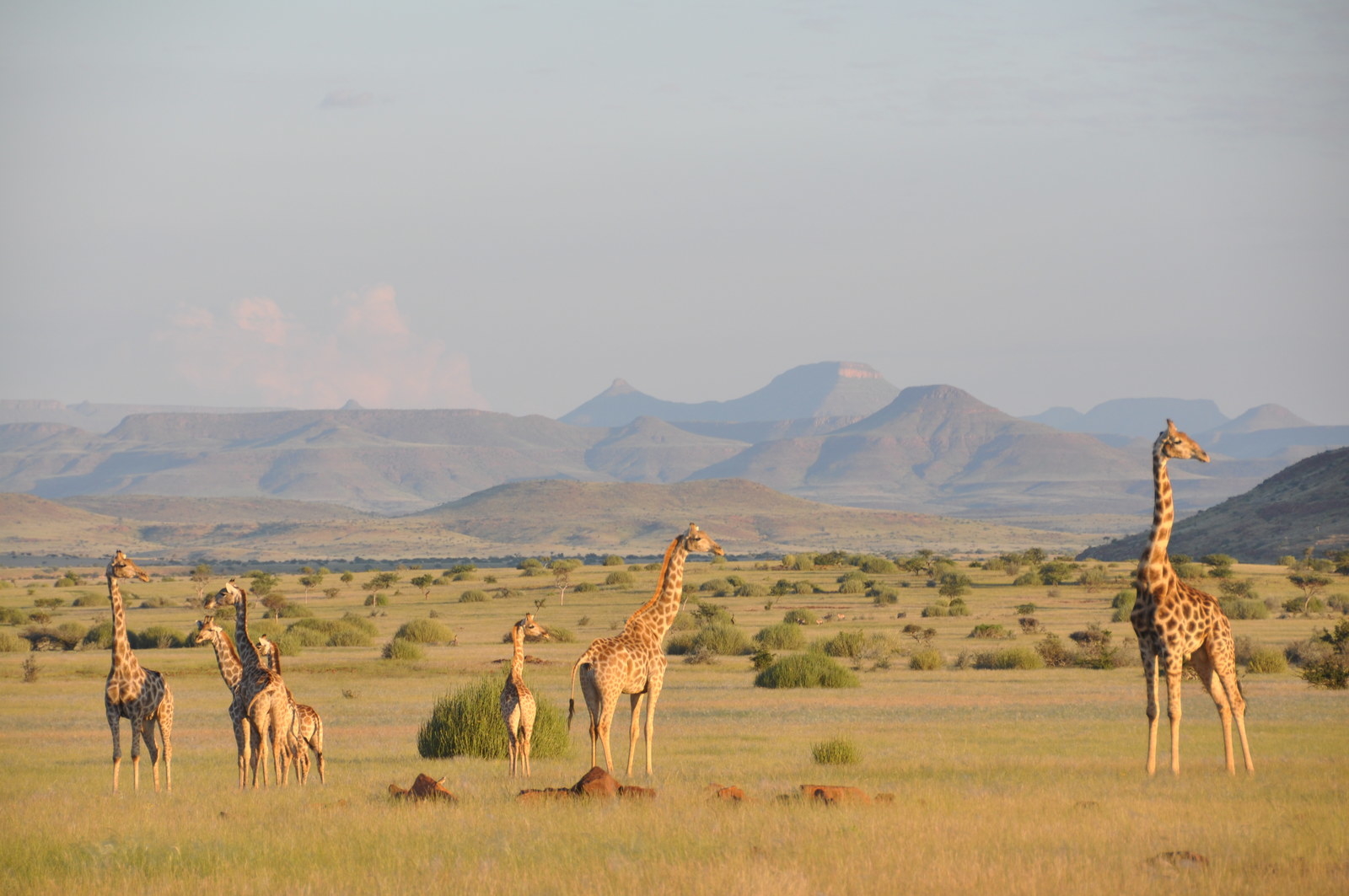
A new DNA analysis shows that there are four species of giraffe, not just one as scientists previously thought.
The species are “as different as brown bears and polar bears” says Professor Axel Janke of Senckenberg Biodiversity and Climate Research Centre in Frankfurt, Germany, the lead author of a paper published in the journal Current Biology today.
"It was absolutely stunning, we couldn't believe what we found,” Janke told BuzzFeed News. “When we had done the first analysis the differences were so large that I immediately saw there must be something to it.”
The finding has implications for conservation efforts, as it means each species is more threatened than we realised.

Until now, scientists had thought there was only one species of giraffe, with nine widely recognised subspecies.
The new analysis looked at DNA markers in the genomes of 105 individual animals and found that the DNA sequences in those markers differ for each of the four species. This means there are at least four different groups of giraffes who are genetically distinct and don’t breed with each other – the definition of a species.
“At first I was reluctant to call them species, because you don't do that lightheartedly,” he said. But by the time all the analyses were run, there was no other conclusion to draw.
The four species are the southern giraffe (Giraffa giraffa), Masai giraffe (Giraffa tippelskirchi), reticulated giraffe (Giraffa reticulata), and northern giraffe (Giraffa camelopardalis).


The different species don't have obviously different appearances, which is why they were only just discovered. But there are some clues once you know to look out for them, Janke told BuzzFeed.
"For example, the reticulated giraffes have very straight lines and large dark blots in their coat, while in the Masai giraffes their lines are much more jagged, and the brown spots are much darker in the centre," he said.
And while northern giraffes have five horn-like structures called ossicones on their head, southern giraffes have only three.

“Scientists and conservationists studying giraffe certainly anticipated that modern-day giraffes were comprised of multiple species and that this would get resolved by genomic sequence data,” Professor Douglas Cavener, a geneticist at Penn State University who was not involved in the study, told BuzzFeed News.
“What was surprising to me is that number of distinct giraffe species identified was just four; I had anticipated six separate species. However, I am convinced by their data and analysis that four separate species is the correct interpretation.”
Janke said he wouldn’t be surprised if a fifth species appears as scientists collect more data. “There is a chance that with more data, and this is what we're working on, there may be a fifth species, but so far the analysis doesn't show it,” he said.

The finding means that each newly recognised species of giraffe is much more endangered than we’d realised before. Currently, with an estimated 90,000 individuals in the wild, giraffes are classified as “least concern” on the IUCN Red List, which tracks the conservation status of species. Just two subspecies are currently listed as “endangered”.
Now that we know there are four species within the total number of giraffes that can’t interbreed, the numbers are more concerning.
The Giraffe Conservation Foundation, whose co-founder Dr Julian Fennessy is an author on the new paper, says giraffes have been overlooked by scientists “for years”. A group of experts, including Fennessy, who are tracking the giraffe population recently proposed moving them up to a threatened category on the Red List to “highlight to the world the rapid decline of giraffe over the last three decades”.
The foundation said in a statement: “With now four distinct species, the conservation status of each of these can be better defined and in turn added to the IUCN Red List as appropriate. As an example, northern giraffe number less than 4,750 individuals in the wild, and reticulated giraffe number less than 8,700 individuals – as distinct species, it makes them some of the most endangered large mammals in the world and of high conservation importance.”
